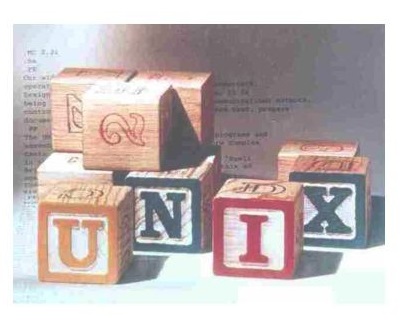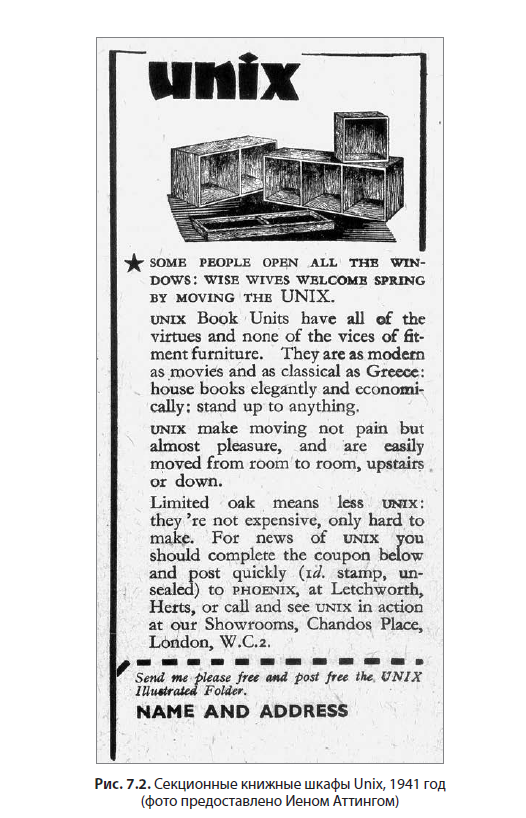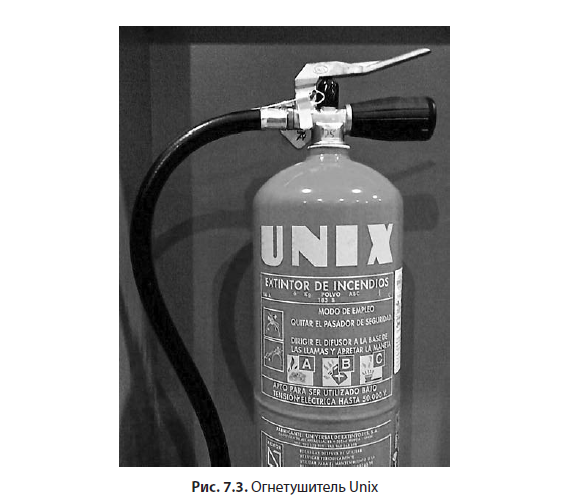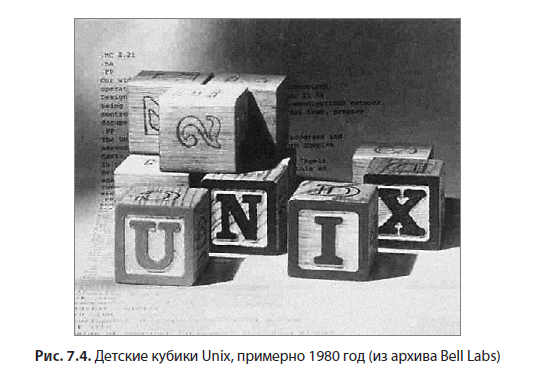 Hello Habitants! We have submitted another novelty " UNIX Time. A History and a Memoir " to the printing house . From the book you will learn about how the Unix system was born, why it is remarkable and why it occupies such an important place in the computer world.
Hello Habitants! We have submitted another novelty " UNIX Time. A History and a Memoir " to the printing house . From the book you will learn about how the Unix system was born, why it is remarkable and why it occupies such an important place in the computer world.
Below is an excerpt from a chapter from the book "Commercial Realization".
Commercial implementation
AT&T was believed to have banned the commercial distribution of Unix because, as a government monopoly, it competed with other operating system vendors, using revenues from telecommunications services to cross-subsidize
Unix development. The most AT&T could do in this situation was to sell Unix licenses to corporate customers for $ 20,000 (while educational institutions were licensed on preferential terms), but in limited quantities and without
any support. This policy avoided regulatory sanctions.
7.1. Separation
Despite the regulatory measures, by 1980, AT&T was under attack as a monopoly. Back in 1974, the US Department of Justice launched an antitrust lawsuit against AT&T on the grounds that the company obliged subscribers to use only phones manufactured by Western Electric, which were not sold, but rented, and the rent was a significant part of the income. The Justice Department demanded that AT&T spin off the Western Electric division that made the equipment.
Instead, AT&T proposed a spin-off between a main branch office providing long distance services and seven regional telephone companies (Baby Bells), which would provide local phone services in their geographic areas. The Western Electric division AT&T wanted to retain it by agreeing to remove the requirement for operating companies to use only their equipment. She kept Bell Labs for herself.
The settlement agreement with the Department of Justice, by which AT&T abandoned the operating companies, was finally reached in early 1982 and went into effect on January 1, 1984.
The split was a dramatic turning point that ultimately led to the demise of AT&T. The next 20 years of miscalculations and bad decisions turned Bell Labs into a pathetic semblance of what it used to be, when it had a clear and precise mission and adequate and stable funding.
In 1984, a subsidiary company called Bellcore (Bell Communications Research) spun off from Bell Labs to provide research services for Baby Bells. Bellcore left a lot of people from the research department, mainly those who were engaged in communications. Among them were some colleagues from Unit 1127, in particular Mike Lesk and Stu Feldman. But at some point, the regional telephone companies decided that they did not need research, and Bellcore was acquired by SAIC and renamed Telcordia. It ended up being owned by the Swedish telecommunications company Ericsson.
In addition, Bell Labs was renamed AT&T Bell Laboratories in 1984 because the settlement agreement would otherwise not allow AT&T to use the Bell name. We were strongly encouraged to always use the full name only.
7.2. USL and SVR4
After the division into AT&T's inability and unwillingness to trade Unix, there were attempts at active commercial activity, which began to be undertaken by a part of the company that was organizationally very remote from the research department. Physically, they were also quite far from us, occupying a building in Summit, New Jersey. Since it was surrounded by busy highways, it was informally called Freeway Island. This organization was originally called the Unix Support Group (USG), but eventually became the Unix System Laboratories, or USL. The first USG was created in 1973 by Burke Tag in an attempt to provide centralized support. Over time, these groups have expanded their activities, including sales and advertising.
There was undoubtedly a market for selling Unix. It could even be said that it was inadvertently created by AT&T by handing out licenses to universities. After all, students who were accustomed to working in this OS wanted to continue after graduation, having already settled in commercial companies that could afford to buy licenses for money. Since 1984, the USL has worked hard to make Unix a professional commercial product. This culminated in System V Release 4, or SVR4. AT&T has invested significant resources in making this a standard implementation and carefully defining the compatibility of both code and object modules. I think it was the attention to standards and compatibility that was important.
The details of SVR4's development and AT&T's interactions with employees and competitors over the past ten years are not very interesting. Therefore, I will not dwell on them, especially since in some sense they are no longer relevant: the focus of attention has shifted towards the Linux OS. The System V Wikipedia article describes the situation like this:
Industry analysts usually characterize the commercial version of Unix as going through a slow but steady decline.
Of course, this is only a commercial version; open source variants such as the BSD family, which we'll talk about in the next chapter, live and thrive.
In addition to the operating system, AT&T's product line also included various auxiliary programs, including compilers for C, C ++, Fortran, Ada, and even Pascal. They were mainly based on Steve Johnson's portable C compiler. A lot of effort has been spent on standardization to ensure compatibility between source code and binary formats in libraries.
During this period I was the head of Björn Stroustrup's department, which meant frequent contact with the USL about the development of C ++. For the most part, they turned out to be mutually beneficial, but there were also cases where there was a clear difference in priorities between the research department and the organization responsible for selling the product. For example, in 1988, I had a heated discussion with a USL manager.
Manager: All errors in the C ++ compiler should be fixed, but its behavior should remain unchanged.
Me: It's impossible. Correcting an error by definition leads to a change in behavior.
Manager: Brian, you don't get it. You must correct the error, but the behavior of the compiler cannot change.
Formally, I was absolutely right, but at the same time I perfectly understood why the manager was pressing me: too large or too fast changes are a serious problem for those who are engaged in software development using new languages and tools.
USL opened a subsidiary, Unix Pacific, in Japan, under the leadership of Larry Croom, who worked at Bell Labs for many years in the research department. As a result, as part of technical cooperation, I visited Japan twice with company money. During my exchange trip with Japan's largest telephone company, NTT, I gained a clear understanding of the unofficial hierarchy. The CEO was supposed to play golf with his NTT colleague. The director of the Center played tennis with his colleague. Humble department managers like myself were offered a shopping trip to Tokyo, which I gratefully declined.
Not all AT&T attempts to commercialize Unix have been successful, but the standardization of Unix was a great gift to the entire community. Despite the occasional controversy between R&D and USL, I must say that USL has a large group of talented colleagues who have made significant contributions to Unix and related software systems.
7.3. UNIX
Sometime in the early days of Unix, its trustees at Bell Labs decided that the name was a valuable trademark that should be protected, which, from a commercial point of view, was certainly the right decision. They tried to prevent this name from becoming a generic term that anyone can use. This has already happened with words like aspirin (in the US, though not everywhere), escalator, zipper, and (more recently) the App Store.
As a result, there was a requirement for Bell Labs employees to use the name correctly. In particular, it could not be used as an independent noun ("Unix is an operating system"). It must be identified as a trademark and appear as an uppercase definition. That is, only the "UNIX operating system" option was allowed, which gave rise to ridiculous sentences like "UNIX operating system is an operating system." In 1984, Rob Pike and I had to defend the title of our book The Unix Programming Environment (in Russian translation "UNIX. Programming Environment"), because they were trying to turn it into The UNIX Operating System Programming Environment. Ultimately, we came to a compromise: there will be no additional information and a trademark on the cover,but an almost invisible asterisk and a note will appear on the title page.
Cumbersome wording was a problem, especially for those who were serious about their writing, so various workarounds were sought. For example, in the standard macro package for Troff ms, Mike Lesk added a formatting command that added "UNIX" in uppercase and automatically created a footnote on the first page. Usually the footnote looked like this:
† UNIX is a trademark of Bell Laboratories (UNIX is a trademark of Bell Labs).
But it was worth using the command with an additional undocumented parameter, the text changed:
† UNIX is a footnote of Bell Laboratories.
I don’t think that when we used this surprise joke from time to time, someone paid attention to it at least once, but this code is still present in the standard macro package.
At the same time, the word Unix was used for goods and services that had nothing to do with operating systems, for example, for the pens shown in Fig. 7.1, for bookcases from fig. 7.2 and a fire extinguisher from fig. 7.3. All of this, apparently, was produced outside the United States and, accordingly, did not fall under American trademark law. Bookcases generally date back to 1941, that is, they appeared even before the birth of Ken and Dennis. Another fascinating example: Unix baby diapers from Drypers, which used Unix as an abbreviation for unisex (for children of both genders).



7.4. Public Relations
Bell Labs had a steady stream of visitors, and from the mid-1970s to early 1980s, tourist presentations began. A small group sat down in a conference room, while members of the Center briefly explained what Unix is and why it is important to AT&T and the world. Most of the presentations were given by Mike Lesk and myself. We had the same flaw: we constantly complained about it, when in fact we liked it.
Among the visitors there were both mere mortals and "outstanding" ones. The latter included those important to AT&T who needed to be impressed, and sometimes just the owners of big names. For example, in 1980 I gave a presentation to Walter Annenberg, founder of TV Guide magazine. It was on this that he earned money, which may have helped him become an ambassador to the UK, although by the time I showed him the wonders of Unix, his diplomatic career was already over. Bell Labs President Bill Baker accompanied him as a very important guest. I've often included a demonstration of pipelines in my repertoire, showing how you can quickly solve urgent problems by connecting programs with each other. I used a shell script to search the document for spelling errors because it was a good example of a long pipeline,helping to understand how existing programs can be combined in new ways.
The spell check script was created by Steve Johnson. The main idea was to compare the words of the document with the words from the dictionary. Any word missing from the dictionary could be a spelling mistake. The script looked something like this:

I once had to give a presentation to William Colby, who at the time was the director of the Central Intelligence Agency (CIA), that is, undoubtedly, an important person. He, too, was accompanied by Bill Baker, who, as the head of the President's Foreign Intelligence Advisory Board, himself had significant powers.
I wanted to show you how Unix simplifies certain kinds of programming, but the spell script was slow enough and I chose not to drag out the presentation. So I ran this script ahead of time, wrote the output to a file, and wrote a new script that just slept for two seconds and then output the results the day before:
sleep 2
cat previously.computed.outputThis demo technical development proved to be excellent. If Mr. Colby understood anything at all, he probably thought the spell check was done very quickly. But this is a lesson for everyone attending the presentation. Do not believe everything you see there!
Public Affairs has also produced promotional films about the wonders of Bell Labs, including Unix. Thanks to YouTube, I can look at old friends (and myself) at a time when we were all younger and our hair was thicker.
There was even a small series of Unix print ads. As far as I remember, the children's cubes in the advertising poster with fig. 7.4 was my idea. The poorly visible background is a document I provided that was created in Troff.

You can familiarize yourself with the book in more detail and pre-order at a special price on the publisher's website